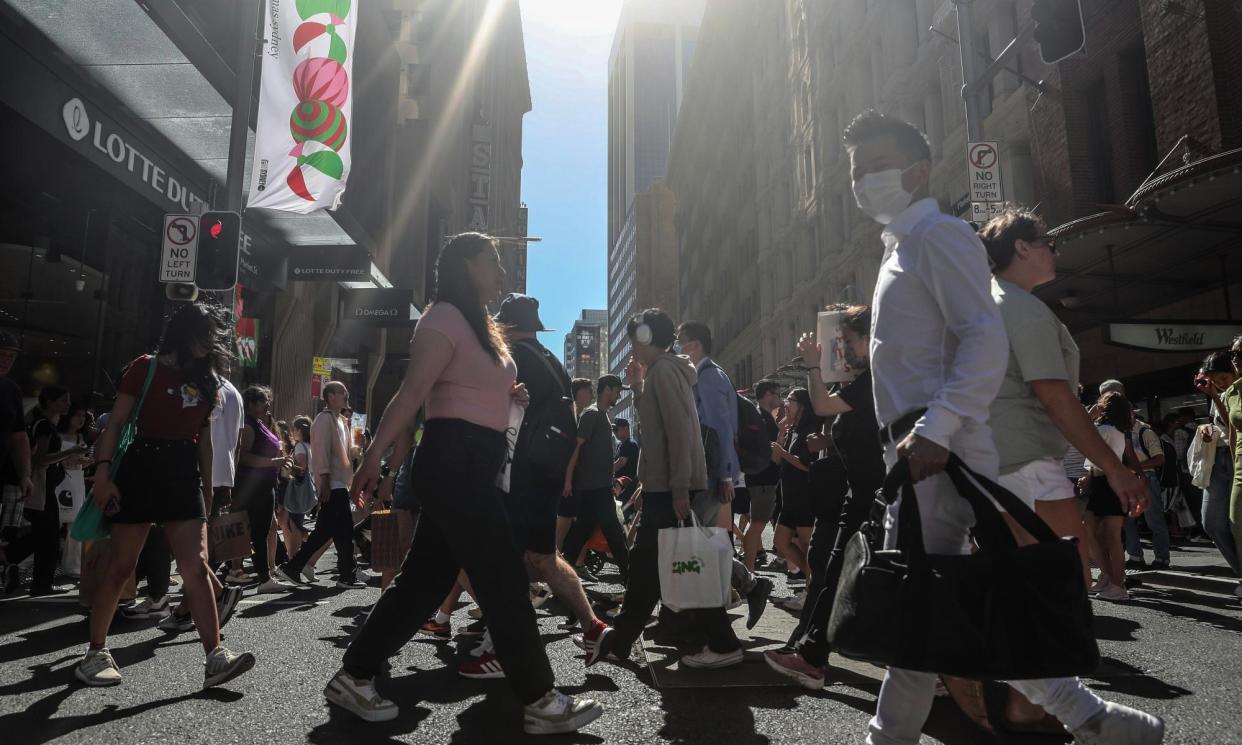Migration rose by one-third last year to lift Australia’s population by a record 659,000

Australia welcomed more than 2,000 migrants a day in the year to September, helping to swell the country’s population by a record 659,800, reigniting political debate about measures to reduce arrivals.
Migration arrivals rose by a third compared with the previous year to hit 765,900, driven by international students and workers on temporary visas, while departures slipped to 217,100.
The record net annual increase of almost 550,000 comes despite the Albanese government’s expectation to bring migration down from 510,000 to 375,000 a year by June 2024, which was laid out in the mid-year economic and fiscal outlook. Net migration in the September 2023 quarter hit 145,200, close to government expectations.
The Coalition has taken up the politically charged issue as a talking point, with the shadow immigration minister, Dan Tehan, telling reporters in Canberra that “record numbers of people are causing a housing crisis, they’re causing a rental crisis”.
The anti-racism activist group Democracy in Colour denounced the comments, with campaigner Jarrod Tan saying it is “irresponsible” to play the “migrant blame game for a housing crisis that is decades in the making”.
Tehan denied demonising migrants for political gain, but argued that immigration levels must be “sustainable” and “in-sync” with housing supply.
The treasurer, Jim Chalmers, told parliament in question time that the data “doesn’t take into account … the quite substantial action” the government has taken to put “downward pressure” on net overseas migration.
In December the government announced it would enact reforms recommended by the migration review including raising English language requirements and implementing a “genuine student” test for international students.
Ahead of the ABS data release the home affairs minister, Clare O’Neil, announced on Wednesday the government would enact some of these migration-cutting policies starting this Saturday, including the imposition of “no further stay” conditions on visitor visas to prevent them being exploited by those who should be on student visas.
The employment minister, Tony Burke, deflected attacks by noting that opposition leader, Peter Dutton, had previously publicly advocated “for higher rates of immigration”, including after the September 2022 jobs and skills summit.
Businesses in search of skilled labour say the migration system should not get too restrictive, with KPMG’s head of migration services, Mark Wright, encouraging the government to prioritise productivity.
“An informed discussion around Australia’s migration program should centre on the skills Australia requires, rather than simply the numbers which make up our overall migration program,” he said.
High population growth risks forcing up the unemployment rate, as jobs become increasingly scarce, though Thursday’s fall in the unemployment rate indicates the jobs market is comfortably absorbing migrant workers.
“This is adding to the supply of labour and we need to add around 35k of jobs each month to keep the unemployment rate steady,” the Commonwealth Bank senior economist Belinda Allen said.
The economy added 116,600 jobs – two-thirds of them full-time roles – in February, compared with economists’ forecast for a net gain of 40,000 positions.
High population growth is in line with the Reserve Bank’s estimation in its February statement on monetary policy that Australia’s population would grow by more than 530,000 a year by June 2024.
While net overseas migration increased more in the September 2023 quarter than the preceding June quarter, it remained lower than the current record of 157,684, from the March quarter of 2023.
“Typically the March and September quarters see a larger increase in net overseas migrants due to the start of the university semester,” Allen said.
Thursday’s data also revealed substantial interstate migration in the year to September 2023, with 33,000 people leaving New South Wales and 32,000 people moving to Queensland and a further 10,000 moving to Western Australia.
Australia’s total population hit 26.8 million in September, according to the new ABS figures, though the bureau’s population clock estimated in January that the figure has already reached 27 million.


